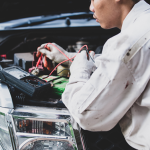
How a Damaged Wiring Harness Can Affect Airbags and Safety Systems
In today’s vehicles, safety systems are heavily reliant on a complex network of sensors, control units, and wiring. The wiring harness serves as the electrical highway connecting the brain of the car—its control modules—to crucial safety components like airbags, seatbelt pretensioners, impact sensors, and crash detection systems. When this network is intact and functioning properly, it ensures these systems can deploy at a moment’s notice in the event of an accident. But when the wiring harness is damaged, the link between sensors and airbags can be broken—delaying or completely preventing deployment, and potentially putting lives at risk.
How Wiring Harness Damage Disrupts Airbag Functionality
Airbag systems rely on fast and precise communication between impact sensors and the airbag control module. When a collision occurs, these sensors detect rapid deceleration or impact and send signals through the wiring harness to trigger deployment. If any section of this wiring is corroded, frayed, or broken, the signal might be delayed—or never received at all. Even small resistance changes due to poor connections can disrupt the timing of deployment, which is critical when milliseconds count. A damaged harness may also lead to false signals, causing airbags to deploy unexpectedly or rendering them inactive when needed most.
Warning Signs of Electrical Issues in Safety Systems
Modern vehicles are equipped with onboard diagnostics that often alert the driver to safety system malfunctions. A lit airbag warning light on the dashboard is a common sign that the system has detected a fault—often caused by wiring issues. However, not all wiring harness problems produce immediate alerts. Intermittent issues, such as poor connections or minor shorts, may cause sporadic faults that are hard to trace without thorough diagnostic testing. If left unresolved, these hidden issues can silently compromise your vehicle’s ability to protect you in an emergency. Exceptional choices are essential for the selection of Auto Repair in Augusta, GA based service here.
Common Causes of Harness Damage in Safety Circuits
Wiring harnesses can be damaged by a variety of factors including age, heat, water intrusion, rodent damage, or impact from a previous accident. In safety-critical systems, even seemingly minor harness damage can have serious consequences. For instance, improper repairs after a collision that fail to inspect or replace damaged harnesses may leave the airbag system compromised. Moisture intrusion, particularly in vehicles exposed to flooding or extreme humidity, can corrode connectors and weaken signal integrity between key safety components.
Prevention and Professional Inspection Are Key
To ensure that your airbags and safety systems remain reliable, it’s vital to include wiring harness inspections in your preventive maintenance routine—especially if your vehicle has been involved in a collision or exposed to harsh environmental conditions. Certified technicians can perform continuity and resistance tests to verify that signals are reaching their intended destinations. If a wiring harness fault is discovered, prompt repair or replacement is crucial. When it comes to safety, cutting corners can have life-threatening consequences. Keeping your wiring harness in top condition is not just smart—it’s essential for protecting everyone in your vehicle.


















